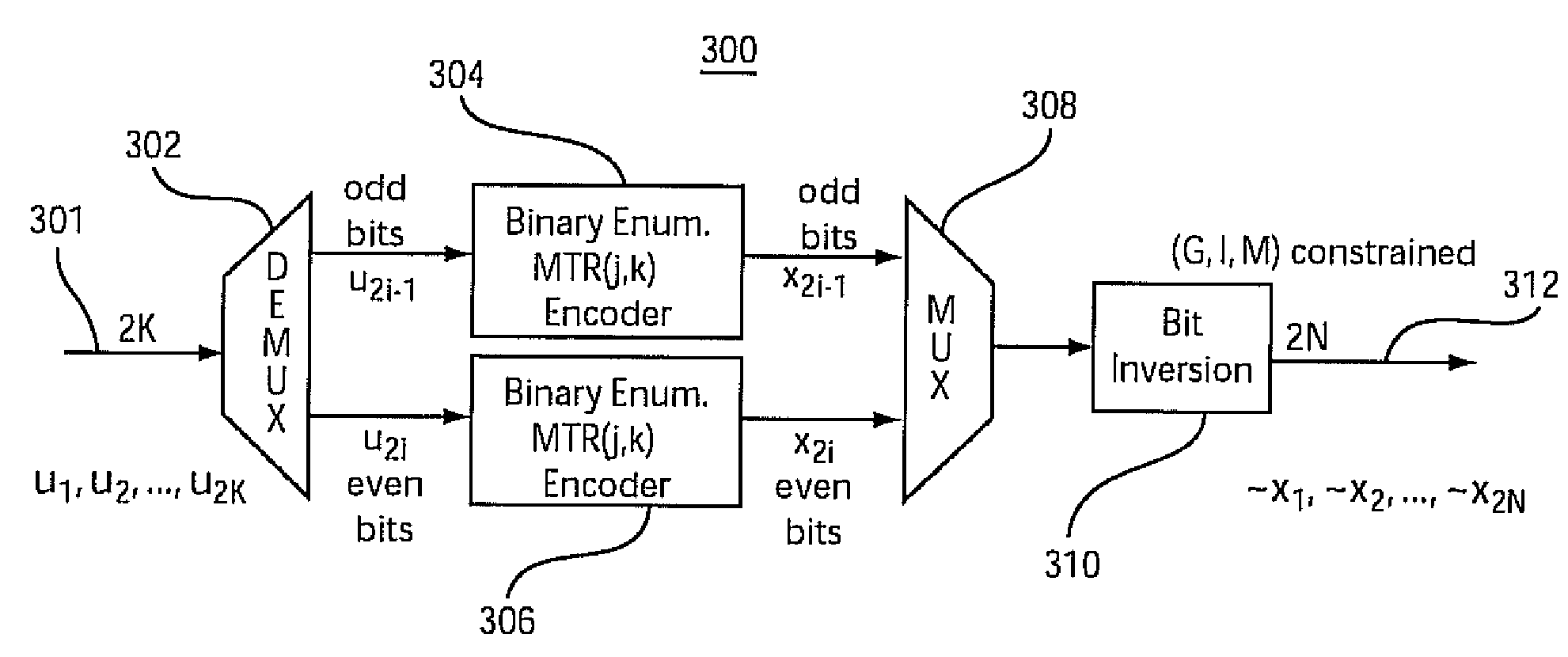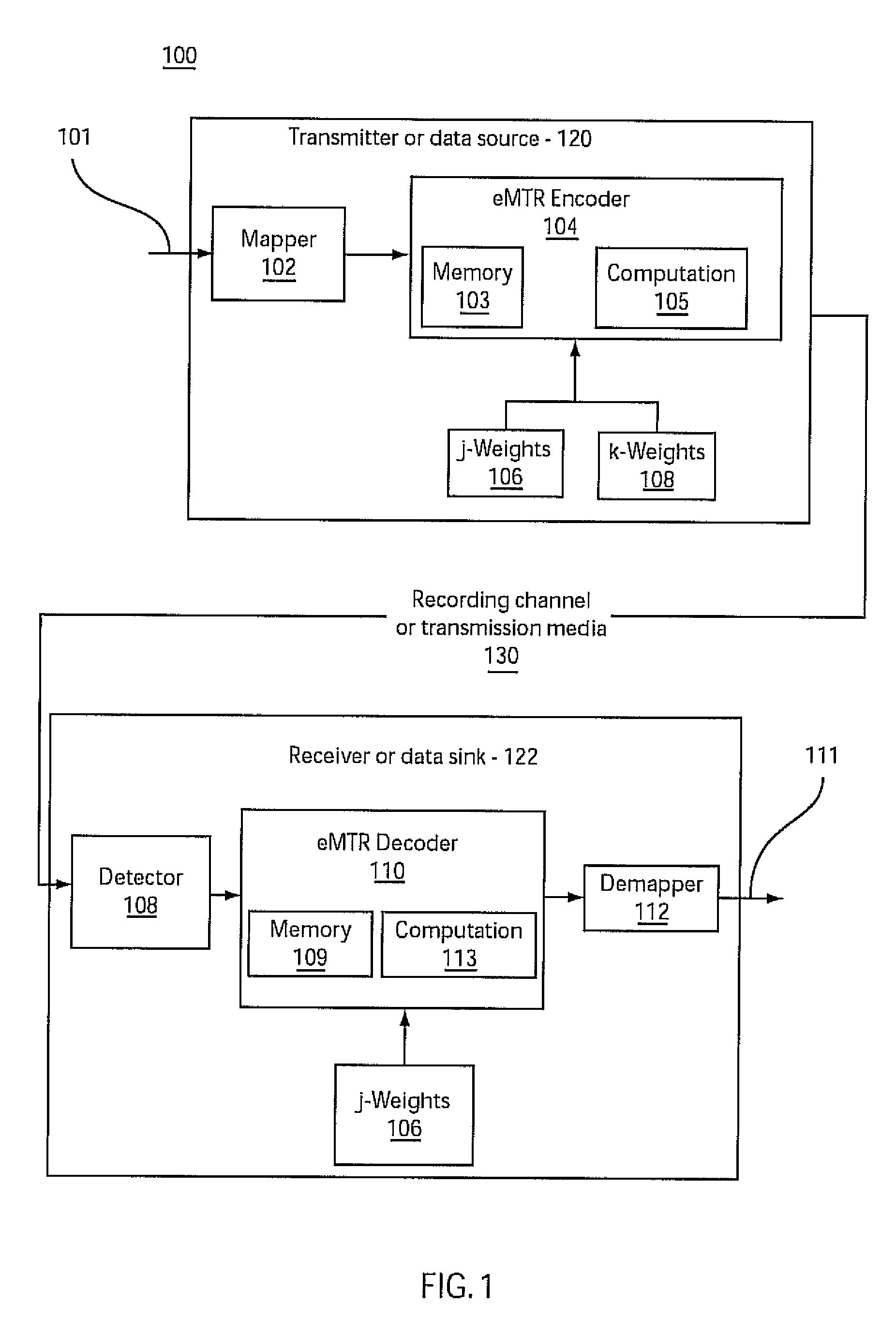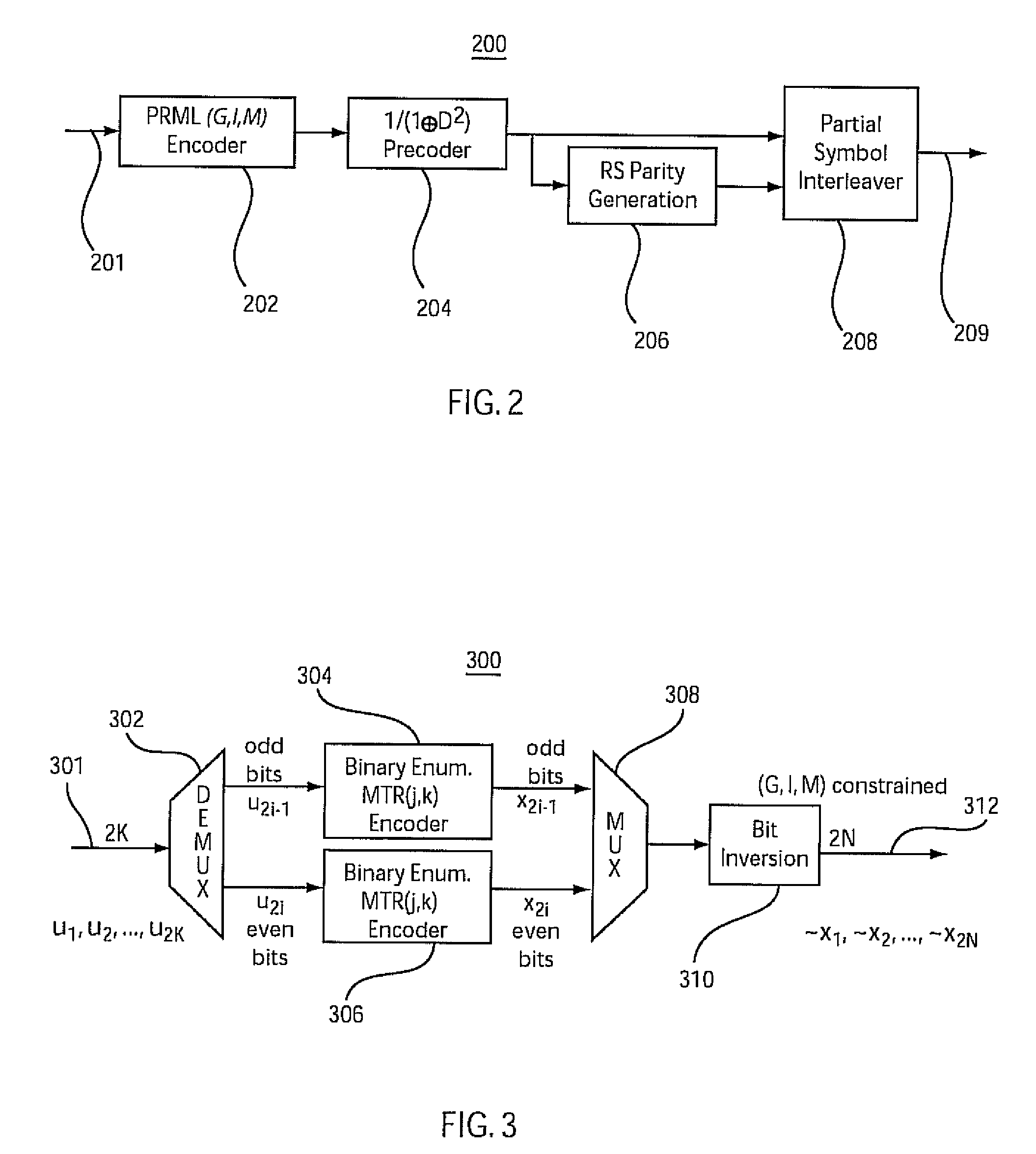Systems and methods for enumerative encoding and decoding of maximum-transition-run codes and PRML (G,I,M) codes
a technology of applied in the field of systems and methods for enumerative encoding and decoding of maximum transition run codes and prml (g, i, m) codes, can solve the problems of error propagation at the modulation decoder, the class of fibonacci codes does not achieve the desired vfo constraint, and the effect of high efficiency
- Summary
- Abstract
- Description
- Claims
- Application Information
AI Technical Summary
Benefits of technology
Problems solved by technology
Method used
Image
Examples
Embodiment Construction
[0020]A large class of maximum-transition-run (MTR) block codes is presented, which is based on a novel low-complexity enumerative encoding / decoding scheme. This new class of MTR codes is obtained by a general design method to construct capacity-efficient MTR codes with predetermined j and k constraints and limited error propagation at the decoder.
[0021]Two-way interleaving of these codes yields long high-rate PRML(G, I, M) modulation codes satisfying tight global G=2k and interleaved I=k constraints. Moreover, these (G, I)-constrained codes satisfy the M=2j constraint, i.e., they have limited runs of alternating 2T magnets at the channel input.
[0022]Embodiments of the present invention can take the form of an entirely hardware embodiment, an entirely software embodiment or an embodiment including both hardware and software elements. In a preferred embodiment, the present invention is implemented in hardware, but may include software elements. The software may include but is not lim...
PUM
 Login to View More
Login to View More Abstract
Description
Claims
Application Information
 Login to View More
Login to View More - R&D
- Intellectual Property
- Life Sciences
- Materials
- Tech Scout
- Unparalleled Data Quality
- Higher Quality Content
- 60% Fewer Hallucinations
Browse by: Latest US Patents, China's latest patents, Technical Efficacy Thesaurus, Application Domain, Technology Topic, Popular Technical Reports.
© 2025 PatSnap. All rights reserved.Legal|Privacy policy|Modern Slavery Act Transparency Statement|Sitemap|About US| Contact US: help@patsnap.com



